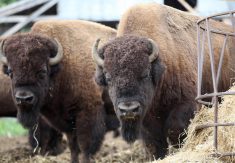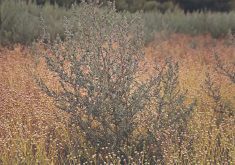Thinking of adding a new enterprise to your farm? Be prepared to suffer.
Some new ventures are instant hits, but often success goes to those who grind it out and find ways to endure when times are bleak.
Merv Farmer knows that routine. Forty years ago, he and wife Lou went up to their eyeballs in debt, scrimped and worked like slaves to create Manitoba’s most successful community newspaper chain.
Then in 1996, they took up elk ranching, timing their entry just as that industry went into a decade-long slump.
Read Also

High prices see cow-calf producers rushing to incorporate
Farm accountants are reporting a steady stream of cow-calf producers rushing to get their operations incorporated ahead of selling their calves this fall.
“We figured elk would be a good retirement venture,” Farmer says, noting that in 1996 antler velvet, a prized Chinese and Korean
medicinal ingredient, was fetching a mouthwatering $120 per pound.
“However, by the time we had our first cutting in ’97, CWD (chronic wasting disease) had broken out in the west and that shut the borders to Korea and China. We got $7 a lb.”
Farmer didn’t panic. Of course, it helped that he still had his day job.
He started working at his local paper, the Stonewall Argus, in 1955 at age 17. A dozen years later, relying on loans and Lou’s nursing income, they bought the paper and began building their small newspaper and commercial printing empire in Manitoba’s Interlake.
Eventually media giant Quebecor bought the newspaper chain on the condition Farmer stay and run it. He did, expanding it by buying another seven small town newspapers.
But by the time Farmer retired in 2000, antler prices were still “in the dumpster.” CWD had surfaced again and it was apparent any rebound in antler prices was years off.
The Farmers had invested about $750,000 in land, a barn, fences and stock – and would have had to write off a sizable chunk of that if they quit.
“But it wasn’t really the money,” says Farmer. “I wasn’t going to admit that I had failed.”
So the couple decided to create a meat business. It was a slow and painful process: endless cold calls on meat markets and restaurants, either getting a flat-out “no” or the old “maybe later” brush-off. They put meat on consignment and went to farmers’ markets, and slowly business grew. It was only last year it finally turned a profit.
Today, the Farmers, who have increased their herd to more than 500 animals, can’t keep up with demand. And, wouldn’t you know it, antler prices have increased again. A productive bull can generate $600 or more a year in antler revenue.
“Our meat demand is ridiculous. If I had a 1,000 head right now I couldn’t keep up with demand,” Farmer says.
“Our biggest problem is deciding whether to slaughter a bull or keep it for its antler production.”
Farmer says the trials of elk ranching were easy compared to the early days of their newspaper career, when money from subscription renewals determined what went on the dinner table.
“Some months you might get $3,000 and other months it might be just $500,” he says. “We ate a lot of hamburger back then.”
But they endured.
“I’ve seen a lot of people get into business and when times got tough, they threw up their hands and walked away,” says Farmer. “There was no way we were going to do that – we just refused to give up.”
Endurance, he says, is a two-part equation.
“Money is No. 1, and determination is a close second,” he says.
“Things rarely work out in business as you hope they will, but even when it’s bad, there’s always an alternative. I guess the question is, if you can afford to keep going on, whether you’ve got the desire to.”
It’s a question worth asking.
If hoped-for revenue fails to materialize, expenses soar and your business plan turns out to be worthless, what will you do?
Glenn Cheater is editor of the Canadian Farm Manager, the newsletter of the Canadian Farm Business Management Council. The newsletter as well as archived columns from this series can be found at www.farmcentre.com.














